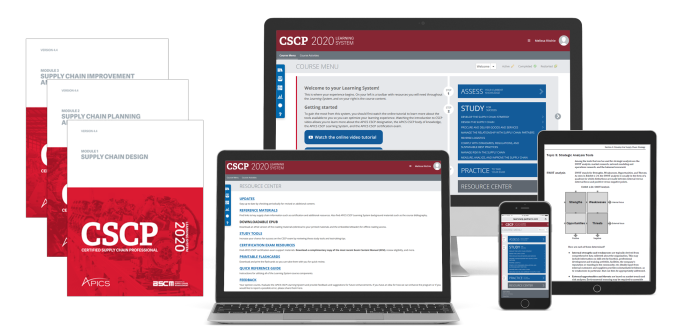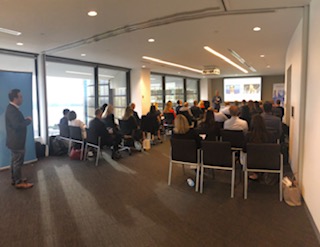Guest blog from Marie-Claire Ross, Trustologie

Transitioning to managing a remote team when your team is normally co-located requires a steep learning curve for both team leaders and team members. Throw in the COVID-19 crisis and high levels of anxiety and trust levels in the team can come crashing down if not managed correctly.
Whenever there is change and uncertainty, employees will naturally withhold expending too much energy into a team, until it feels safe to do so. The antidote is trust.
After all, when you don’t have trust, it’s like walking through sludge. Everything takes a long time to get done. Miscommunication and misunderstandings become rife requiring multiple meetings to sort out differences – slowing down decision-making and action. Blame increases and avoiding accountability resulting in more conflict.
Continuing to boost your teams trust levels is critical, while everyone is learning the ropes. This is trickier to do remotely because repairing and maintaining trust is much easier face-to-face. To ensure team performance doesn’t drop precipitously requires the team leader, and team members, to be willing to not only change how they interact, but also their underlying mindsets.
That’s because humans have this odd tendency to only believe something is true if they can see it. In a work environment, leaders only think team members are working if they can seethem work.
Today, team leaders have to cast aside this limiting belief that has literally stopped remote working from really taking off in the past. Now, we’re all in this interesting workplace experiment where leaders have no choice but to let go of the reins and trust that people are getting work done. This requires leaders to stop basing people’s performance on whether they’re seated at their desk from 9-5. The truly liberating and empowering benefit of working from home is that people can adjust their work schedule to fit in with their lives. As long as they can attend important meetings and produce the work required, the set times people work are irrelevant.
Pivoting from measuring time at work to delivering outcomes takes time. Particularly for more mature leaders, who have been conditioned since school to work during set times. Usually the tendency is to micromanage when people aren’t visible – sending an unintentional message to employees that they’re not trusted. The result is employees will overwork to demonstrate their contribution. And during this anxious time, this only compounds stress levels.
The good news is that this can be avoided if leaders are self-aware and have the right tools. Visibility can be improved through using project management software that makes progress highly visible to all. While team members need to step up and modify how they work together.
Learning any new skill this takes time. After all, it’s a bit like moving a team from playing netball to football. All the behaviours, mindsets, interactions and communication styles all need to change. And it’s common to make mistakes.
To keep trust levels optimised, there are two elements leaders to focus on in equal amounts. Otherwise, you risk being strong in one area and not the other, creating minimal improvement. These elements are:
- Building trust with each individual in the team and
- Fostering trust between team members.
Counter intuitively; leaders need to spend more time structuring communication and relationship building between team members than when working separately.
Let’s go through the steps to do this using our SUCCEeD Together Trust Framework. This is based on six trust drivers that make it easier to leaders to identify and understand trust issues.
Support – Leaders who care, get the most out of their people. Support underpins all of the other trust drivers and is more critical to remote teams than co-located ones. Essentially, humans don’t trust people who don’t care about them. So leaders need to do more work to ensure that team members feel supported by everyone in the team.
This is so critical because distributed teams have limited opportunities to spontaneously interact in hallways and food areas, which naturally bonds people together.
According to the Building Workplace Trust Study by Interaction Associates, the main way virtual workers wanted their leaders to build trust was to convene periodic face-face meetings (40%). Of course, during the pandemic this is impossible. But for teams that have each previously met in person, building trust remotely is easier. But you can’t take it for granted.
If you’re a team leader, there are two areas that you need to focus on to improve support:
- Foster Visibility – This is on three levels. The first one is ensuring that you share as much information as possible. It can be easy to forget to share making people feel left out. Make it a general rule to be as transparent as possible, in order to provide the right context for people. Share meeting notes, send regular updates and ensure all tasks and expectations are clearly documented. The second level is making sure you’re accessible. In a workplace, it’s important for leaders to walk the floor and speak to people daily. Of course, it’s impossible to do this virtually. To get around it, schedule the same time everyday when people can call you and get an immediate response. Another example is to let employees know that if they mark their email as a high priority you will respond to it that day. Finally, make sure everyone has their webcam on in meetings. Video meetings encourage stronger connection between team members than phone calls.
- Help Team Members Understand each Other– Remote teams are less likely to recover from team members who are not trusting or trustworthy. Creating opportunities for people to learn about each other outside of work is important. Make sure that you schedule social time before or after a meeting to allow people to talk about their personal lives. You can even have virtual coffee or lunches, where people chat over meals. If your organisation is big enough, consider have a Slack channel where people can find others in the organisation that share the same interests such as knitting or photography.
United to Solve Customer Problems – We trust people who are similar to us. In a team, you have lots of different people thrown together. Unite everyone by regularly aligning people to how the work solves customer problems. On an individual level, connect how each person’s contribution brings value to the team and organisation. In team meeting, regularly share customer success stories, customer feedback and challenges.
Clarity of Thinking and Communication– Humans need certainty and communication is all about reducing ambiguity. Without it, we tend to not trust a situation. This trust driver requires leaders to spend time clearly thinking and planning how they are going to provide employees with the right information to do their job.
According to the Building Workplace Trust Study by Interaction Associates, there were three things that virtual workers required from their team leaders:
- Reveal their thinking about important issues
- Remind team members of their common purpose
- Create clear working agreements.
To do this requires spending time one on one with people and convening together as a team.
With each individual, make sure you:
- Discuss what success (including quality) looks like for the team and how their tasks connect to that.
- Work with them to create their own goals that are tied to the team’s overarching goal (and encourage each team member to share their goals at team meetings).
- Clearly articulate how they need to communicate progress with you. For example, do they need to send you a summary email of work done at the end of the week or would you prefer a daily phone call?
- Explain their role, responsibilities, and your expectations. Encourage them to repeat back to you what they believe them to be, so you can check for accuracy and understanding.
For the team, you’ll want to ensure you have regular meetings, in order to co-ordinate team schedules and progress updates.
- Ensure each team member talks about their progress to help everyone understand each person’s contribution. Make each individual responsible for gathering this information and presenting it. This is important because we only trust people who are competent at their job. Encouraging each member to prove their competency will help others trust them.
- Weekly check-ins to discuss what people are working on, what’s keeping them stuck and what is or isn’tworking. If you’re team is new to remote work, implement daily check-ins
Candour – You can’t fix problems, if people aren’t willing to talk about them. Ensuring team members feel safe to talk about issues is one of the defining factors of a high performance team. Unfortunately, conflict can go unresolved because it’s easy to agree in an online meeting.
Improving candour involves the team leader modeling the right behaviours that enable people to speak up. Allow people to challenge you and respond by listening and asking curious questions. Give positive verbal feedback for those brave enough to express issues and concerns. If your team does not naturally talk about issues, ask in meetings: Who has a different point of view on this issue? Consider asking people by name to articulate their support or concerns.
Empowered to Grow– You can’t grow a company unless the people within it are growing. You want to make sure that learning is safe and it’s a journey that you’re all on together.
Set aside time to learn jointly. These can either be formal learning (eg: learning how to read a profit and loss statement) right through to ensuring that people are learning from each other. Don’t forget to do training because you’re remote.
Encourage project wrap-ups to share lessons learned. And also encourage team members to provide virtual presentations that you can record it, and tag, so that it is easily searchable.
Dependability– At the heart of trusting others is being able to rely on people. In a workplace team, we need to feel that others will make good on their promises and do the right thing. This requires ensuring that each team member understands all of the interdependencies of the role. The job of the leader is to provide a holistic understanding of the interactions between all the moving parts and ensure everyone is accountable. Check in with team members regularly about any bottlenecks that are potentially stopping team members from delivering on goals.
Powering Great Remote Teams
Great remote teams thrive in a culture of trust. And it requires team leaders that are conscious of building trust into their team interactions, actions and communication.
And it’s a skill that is going to more valued in the supply chain market once we are in the brand new world on the other side of this pandemic. While we don’t know what the future will look like, it’s pretty clear that leaders who micromanage, resist change and find it difficult to rally their people won’t be tolerated. Low trust leadership slow things down creating unnecessary problems that we can no longer endure in a fast paced world.
The payoff of high trust leaders is extensive. According to Interaction Associates, virtual workers tend to report a significantly higher level of trust in their organisation than their non-virtual workers. And the benefits can be quite staggering – the same research study found that organisations that have high trust have 2.5 times the revenue generation of low trust organisations.
Authentic leadership is built on trust. The more people trust their leader, and each other, the more they will take risks and adapt keeping their organisation alive. In these difficult times, organisations that can adapt quickly will be more likely to survive.

Marie-Claire Ross is the chief corporate catalyst at Trustologie. She is a speaker, author and consultant focused on helping CEOs and leadership teams put the right processes in place to empower employees to speak up about issues, challenge each other, and share information.
If you would like a complimentary Remote Team Trust Cheat Sheet, that can help you build trust both one on one and within your teams, go to https://trustologie.com.au/tips-for-managing-remote-teams/
















